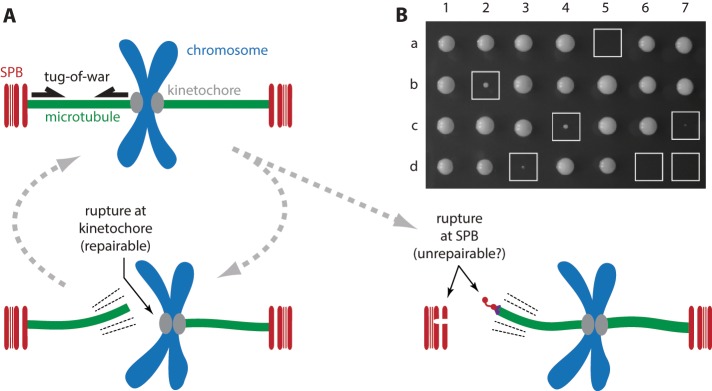FIGURE 4:
Removal of calmodulin from nuclear-side tether sensitizes cells to increased SPB stress. (A) Tug-of-war model, kinetochores vs. SPBs. Top left, after chromosome biorientation, tension generated at kinetochore-attached microtubule plus ends is transmitted to SPB-attached minus ends. Bottom left, strong minus-end anchorage normally prevents detachment at the SPB, such that ruptures, if they occur, happen at the kinetochore–microtubule interface, which is weaker but readily repairable. Bottom right, altering the relative strengths of SPB and kinetochore attachments (e.g., by combining SPC110-407 and DAM1-765) can lead to ruptures at minus ends, possibly causing SPB delamination, cell cycle arrest, and lethality. (B) Tetrad analysis confirms that the mutant SPB allele SPC110-407 is lethal when combined with a mutant kinetochore allele, DAM1-765, which was previously shown to increase mechanical stresses on SPBs (Shimogawa et al., 2006). Each column shows the four colonies derived from a single tetrad produced by mating a haploid SPC110-407 strain with a haploid DAM1-765 strain and then inducing meiosis (sporulation). Boxed colonies, expressing both mutant alleles, exhibited slow or no growth.

